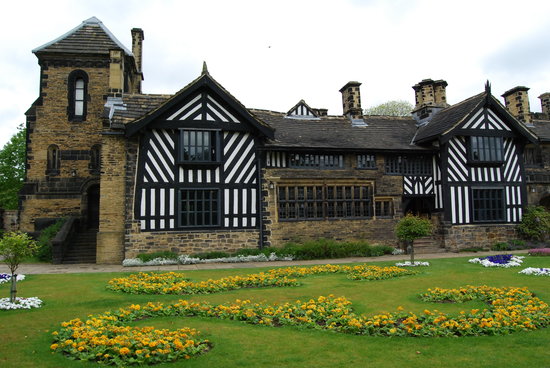
By Lisa Willemaerts.
Heterowhat? That was my first impression when I finished reading the article Sexuality in Heterotopia: time, space and love between women in the historic house. I found and still find the concept of heterotopia a bit confusing. I think Alison Oram tries to show how these historic houses encompass different narratives and when it comes to the history of family, gender and sexuality can offer a more complex and nuanced view of the past.
Historic houses as heritage sites were criticized in the 1980s as being elitist and presenting a privileged view of the national past.[1] Oram argues that since then historic houses have been shifting away from this conservative view and are giving attention to ‘marginalized’ aspects of the past, like women’s history, but also queer history.
In explaining how they do this, she uses Michel Foucault’s concept of heterotopia. Heterotopias are places of otherness and differences which can act as a kind of utopia. They are however also counter-sites in which real sites of a culture are represented, contested and inverted. How is a historic house a heterotopia? It encompasses different layers of time and space and can bring together different and even contradictory elements and meanings.[2] It’s this heterotopia of meanings that is important in shaping a more nuanced and complex image of the past.
She shows how the different narratives are present in these historic houses and can lead to different visitor experiences. For one person Shibden hall is a beautiful building with interesting architecture and for another visitor it’s a kind of pilgrimage to a site of material proof of same-sex love in the past.[3] In her article going on an outing: the historic house and queer public history, she stresses the importance of identifying historical figures as having same-sex relationships to help queer man and woman today create a sense of selfhood and make them feel like they have a past.[4] This feeling of lacking a past, is also strongly present in the LGBT history moth project with it’s slogan: Claiming our history – Celebrating our present – Creating our future.
Oram discusses two case studies Anne Lister’s Shibden Hall and Vita Sackville-West’s Sissinghurst castle garden. There is a clear difference in approach to queer history in these houses. While Shibden Hall talks about Anne’s relationships with women in their exhibition, visitor guide, local tourist literature and by organizing public talks about this subject, Sissinghurst only mentions this aspect about vita’s life briefly in their visitor’s guide. But is this enough? While I was reading the article I got a feeling that they were not really offering a narrative, but just identifying people as gay.
During a panel talk in Sutton House, a historic House in East Londen, Claire Hayward talked about the difficulties of presenting queer history in historic houses. Firstly, the architectural value of these houses makes it difficult to place cards with information here. So to present narratives in general and especially about queer history, they have to rely on the visitor’s guides and staff in each house. This means that there is a great difference in how queer history is represented between these houses or even between different moments in the same house: the staff can be really open about this or not. Secondly, she noticed that these houses generally only state that these people where having same-sex relationships and she was pleading for them to go beyond this sex-centred information and show more about the relationships itself.[5]
So while I think that Oram makes a good point, when she says that it’s necessary for heritages to offer queer narratives and help deconstruct a strictly heterosexual image of the past. I also felt like she was amplifying the situation. At the end of her article she states that: For any visitor, their imaginary historical space may be undercut or challenged, by intimations and direct evidence of an alternative strand of the story.[6] I don’t really think we are there yet. To really challenge people to reimagine their heterosexual view of the past, heritage sites should find ways to overcome the problems of representing narratives in the house itself, and doing more than identify people as gay, but show how this affected their life, their role in society, and how they were not alone in this situation. Although they are heading in the right direction, I felt that stating these historic houses already offer a challenging view of the past is, for now, a ‘bridge to far’.
Sources:
[1] ORAM, ‘Sexuality in Heterotopia: time, space and love between women in the historic house’, Women’s History Review, 21(2012), 536.
[2] ORAM, ‘Sexuality in Heterotopia’, 535.
[3] ORAM, ‘Sexuality in Heterotopia’, 547.
[4] ORAM, ‘going on an outing: the historic house and queer public history’, Rethinking History: The Journal of Theory and Practice, 15(2010), 189.
[5]This panel talk was hosted during the LGBT history month in Sutton House. You can listen to the paneltalk here. Hayward is speaking from minutes 12:55 to 23.
[6] ORAM, ‘Sexuality in Heterotopia’, 548.